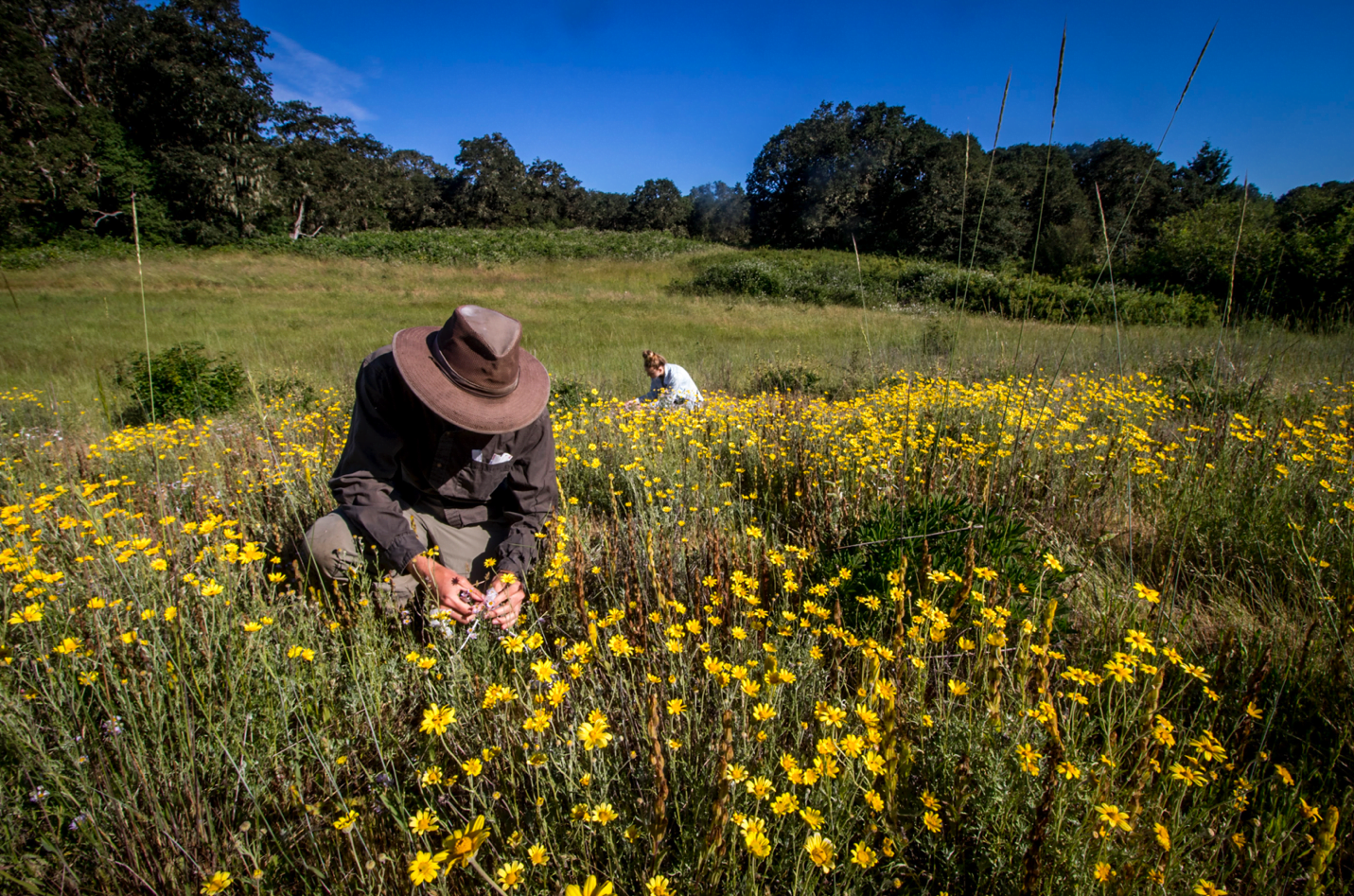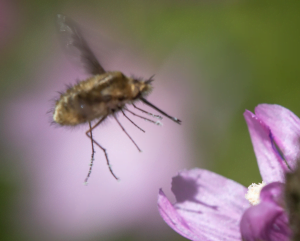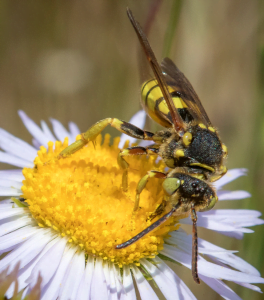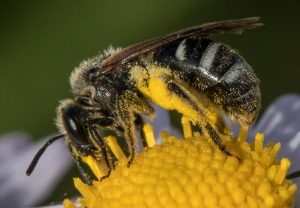
Better than therapy? Watching Willamette Valley pollinators
By David Cappaert, Willamette Valley Pollinator Technician
June 2019
Pollination is an essential part of the mating scheme for plants. A simple example is in the case of apples: honeybees visit flowers which then produce apples. It is more complex (and interesting) in the case of native prairie plants. Our Prairie Pollinator project is a collaboration between IAE scientists Tom Kaye and Matt Bahm, and Susan Waters of the Center for Natural Lands Management, with support from the Army Corps of Engineers. The goal is to describe the network of pollinators and floral resources that facilitate reproduction of prairie plants in general and the endangered Willamette daisy in particular in the Willamette Valley of Oregon. How much pollen do beetles, sweat bees or hoverflies carry to the flower? Are they providing sufficient pollination to maximize seed production in the daisy? For the pollinators to do this work for Willamette daisy, what other plant species do they require to sustain them for the few weeks before, during, and after Willamette daisy is in bloom? These are the scientific questions of our project, and my work for this pollination season.
But to get down into the weeds (so to speak), here is what we do: visit a lovely and diverse meadow carpeted in indigo and yellow. Watch a patch of flowers, catch and (later) identify every potential pollinator that shows up. The worst case is that you just contemplate flowers for 15 minute sessions, which is better than therapy. More likely, you catch a few tiny insects. Bee flies (family Bombyliidae) are a favorite, little fuzz-balls with a proboscis, darting from one tiny popcorn flower to the next. We see spiky Tachinids (family of flies which hideously parasitize other insects), elegant flower longhorn beetles (family Cerambycidae), and rarely, butterflies. But it is really all about the bees. If your idea of “bee” is honey or bumble, reconsider: these are of minor importance. The workhorses are native sweat bees, leaf-cutters, and many tiny, beautiful insects you would hardly recognize as bees. That they are beautiful is an objective fact: we have about 1000 on pins if you want to see them. But better to be sitting on the ground, watching as a Halictus forages her way through 20 consecutive flowers, her legs growing heavy with pollen.
As an entomologist, I often view plants as mere habitat and food for arthropods. In the company of IAE botanists this summer, I’ve broadened my viewpoint a little. But what I’ve seen over the season is most compelling. This season, we began with a foot of water on top of the field site. Then a wall-to-wall carpet of buttercup and sea blush gives way to Lomatium, checker-mallow (Sidalcea), and lupine (Lupinus), then yielding to wooly sunflower (Eriphyllum) and Madia. Now we’re nearly at the end of the season, with plants dry, brown and apparently lifeless. But in Oregon, many plants and insects are around and can be observed, every day of the year.
Restoration
Research
Education
Get Involved
Contact
Main Office:
4950 SW Hout Street
Corvallis, OR 97333-9598
541-753-3099
[email protected]
Southwest Office:
1202 Parkway Dr. Suite B
Santa Fe, NM 87507
(505) 490-4910
[email protected]
© 2024 Institute for Applied Ecology | Privacy Policy



